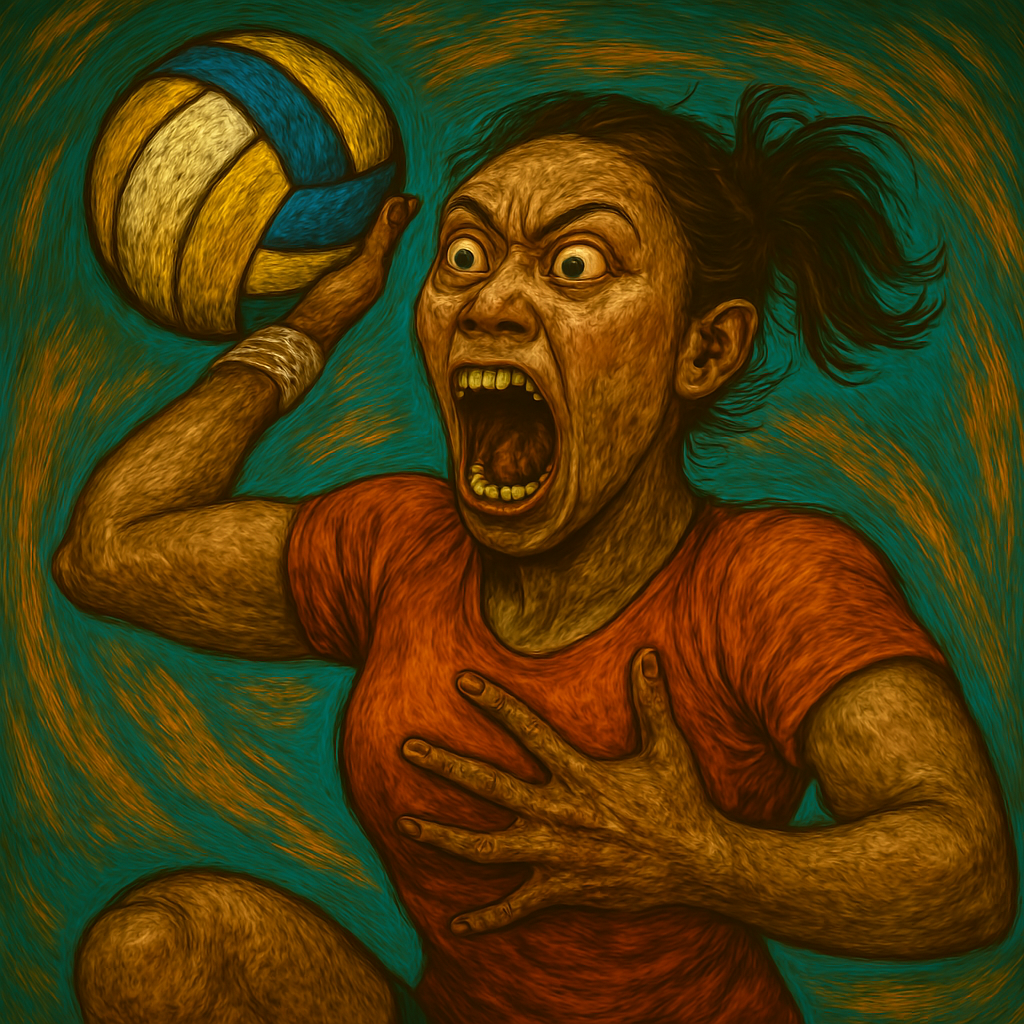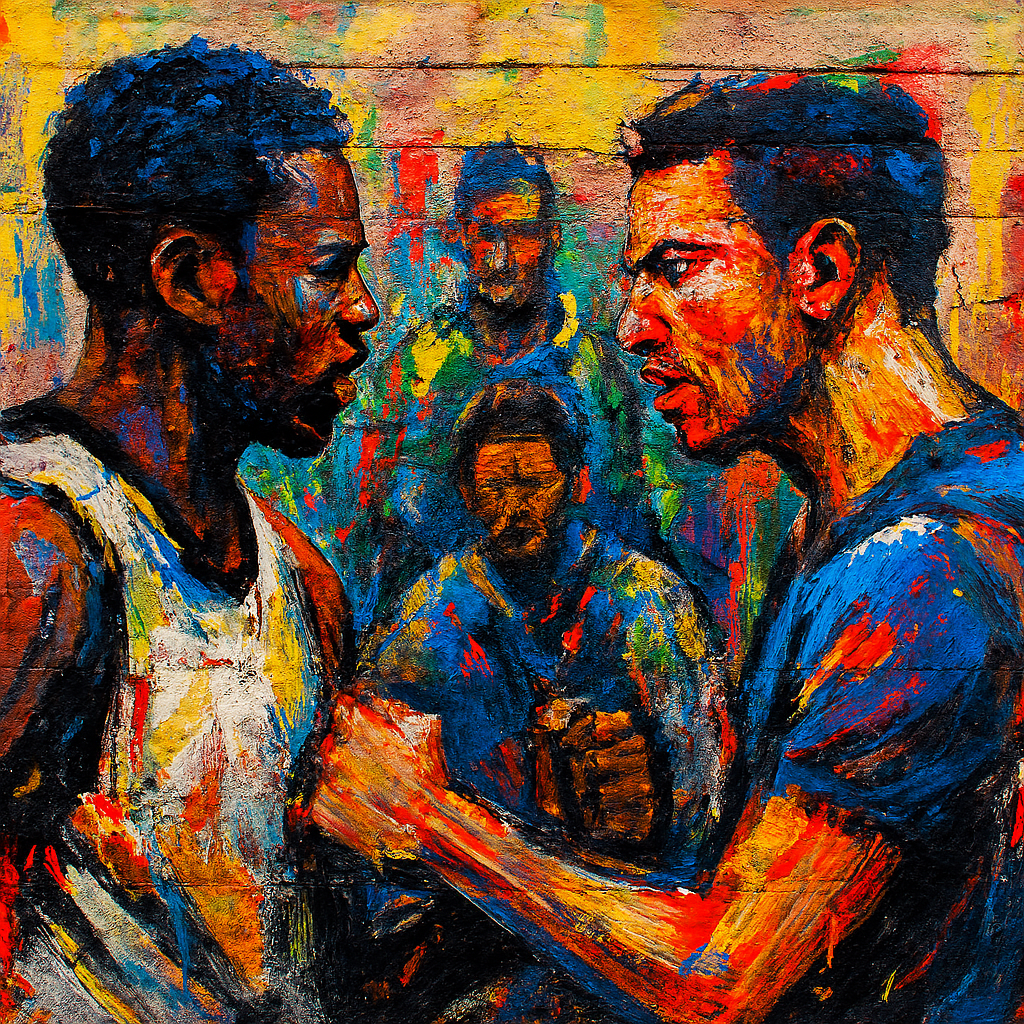Understanding Cricket – A Beginner’s Guide
Cricket is a bat-and-ball game that originated in England and is now played worldwide. It’s a sport of strategy, skill, and endurance, loved by millions of fans. Let’s dive into the basics of how cricket works.
The Cricket Basics
Cricket is a strategic game played between two teams, each consisting of eleven players in different formats. The game takes place on a field with a 22-yard long pitch at the center. At each end of the pitch, there’s a set of three wooden stumps, known as the wicket.
The two main roles in a cricket team are the batsmen and the bowlers. The batsmen aim to score runs, while the bowlers and their supporting fielders aim to restrict runs and dismiss the batsmen.
Cricket Equipment & The Essentials
Cricket, a sport loved by millions worldwide, requires a specific set of equipment. Whether you’re a player, a fan, or a newcomer to the sport, understanding the equipment used in cricket can enhance your appreciation for the game. Let’s delve into the essential equipment used in cricket.
Cricket Bat
The cricket bat is a key piece of equipment. Traditionally made from willow wood, it’s flat on the striking side and has a ridge on the back. Bats come in various sizes to accommodate players of different ages and heights.
Cricket Ball
The cricket ball is made of cork and covered with leather stitched together and dyed in different colours. It’s hard and heavy, weighing between 155.9 and 163 grams for men’s cricket and slightly lighter for women’s cricket. The ball is usually red for Test matches and white for limited-overs matches.
Wickets
The wicket is made up of three vertical stumps and two horizontal bails. The stumps are 28 inches high and the bails are 4.37 inches long. The wicket is normally hammered into the ground and is located at each end of the pitch.
Protective Gear
Cricket involves a hard ball travelling at high speeds, so protective gear is crucial. This includes:
Helmet: A helmet with a face guard is worn by the batsman and close fielders to protect the head and face.
Pads: Leg pads are worn by the batsman and wicketkeeper to protect the legs.
Gloves: Batting gloves provide protection and better grip for the batsman. Wicketkeepers also wear gloves to protect their hands and to catch the ball.
Abdominal Guard: Also known as a ‘box’, this is worn by the batter to protect the abdominal area.
Cricket Clothing
Cricket clothing is typically white for Test matches and colou
red for limited-overs matches. It includes a shirt, trousers, jumper (in cold weather), and cricket shoes with spikes for better grip on the grass.
Cricket Uniforms & the mix of Function and Fashion
Cricket, a sport steeped in tradition, has a distinctive dress code. The cricket uniform, also known as cricket whites or flannels, is more than just a dress code – it’s a symbol of the sport’s history and respect for the game. Let’s delve into the world of cricket uniforms and their significance.
The Basics
A cricket uniform typically consists of a shirt, trousers, jumper (in cold weather), and cricket shoes. The uniform is traditionally white for Test matches, reflecting the sport’s historical roots. However, coloured uniforms are worn for limited-overs matches (One Day Internationals and Twenty20 Internationals), adding a splash of colour to the game.
Functionality
Cricket uniforms are designed with functionality in mind. The fabric is lightweight and breathable, allowing players to stay comfortable during long hours on the field. The loose fit allows for ease of movement, crucial for batting, bowling, and fielding.
Shoes
Cricket shoes are an essential part of the uniform. They have spikes on the soles for better grip on the grass field. Bowlers’ shoes often have reinforced toes for added protection.
Protective Gear
While not technically part of the uniform, players wear various protective gear. This includes helmets, pads, gloves, and abdominal guards. These are usually colours to match the uniform.
Team and Sponsor Logos
In professional cricket, the team’s logo is displayed on the left chest of the shirt, and the right chest often features the logo of the team’s sponsor. This helps identify the team and provides a source of revenue.
Evolution of Cricket Uniforms
Cricket uniforms have evolved over time. The traditional white flannels have given way to coloured uniforms in limited-overs cricket. Innovations in fabric technology have led to uniforms that are more comfortable and suited to varying weather conditions.
Cricket uniforms blend tradition with functionality. They are a symbol of the sport’s heritage, while also serving a practical purpose. So, the next time you watch a cricket match, take a moment to appreciate the tradition of the cricket uniform – it’s more than just clothing; it’s a part of cricket’s rich tapestry.
Understanding the equipment used in cricket is essential for players and adds an extra layer of appreciation for spectators. Each piece of equipment has its own role to play in this fascinating game, contributing to the excitement and allure of cricket.
Scoring Runs
A run is scored when a batsman hits the ball with their bat and then successfully runs to the other end of the pitch. If the ball is hit far enough, the batsmen can score multiple runs from a single ball. Additionally, if the batsman hits the ball and it reaches the boundary of the field, it counts as four runs. If the ball crosses the boundary without touching the ground, it’s six runs – the highest number of runs from a single ball.
Bowling and Dismissals
Bowlers aim to dismiss the batsmen. A batsman can be dismissed in several ways, including being bowled (the ball hits the wicket), caught (a fielder catches the ball without it bouncing), and run out (the wicket is hit by the opposing team while the batsmen are running).
Game Formats
Cricket is played in several formats, differing in duration and strategy. The traditional form is Test cricket, which can last up to five days. One Day International (ODI) cricket lasts about 8 hours, with each team getting 50 overs (an over is a set of six balls bowled) to score. The shortest form is Twenty20 cricket, where each team gets 20 overs and the game lasts about 3 hours.
The Basic Rules of Cricket
This may sound repetitive, but these are the rules.
Cricket, a sport loved by millions worldwide, is a game of strategy and skill. Understanding the basic rules can enhance your appreciation for the game. Let’s delve into the fundamental rules of cricket.
The Objective
Cricket is a game that is played in lots of different formats between two teams of eleven players each on all sorts of different groups of people. The objective of the game is simple as it is to score more runs than the opposing team and get all the opposition out by taking all ten of there wickets.
The Pitch and Field
Cricket is played on a field with a 22-yard pitch in the center. At each end of the pitch, there’s a set of three wooden stumps, known as the wicket.
The Innings
An innings is the period in which a team bats. In Test cricket, each team has two innings, while in One Day Internationals (ODIs) and Twenty20 Internationals (T20Is), each team has one innings.
Scoring Runs
A run is scored when a batsman hits the ball with their bat and then successfully runs to the other end of the pitch. If the ball is hit far enough, the batsmen can score multiple runs from a single ball. If the ball reaches the boundary, it counts as four runs. If it crosses the boundary without touching the ground, it’s six runs.
Bowling and Dismissals
Each team takes turns to bowl and field. The bowler aims to hit the wicket with the ball. If they succeed, the batsman is ‘bowled’ out. A batsman can also be ‘caught’ out if a fielder catches the ball before it touches the ground, or ‘run’ out if the wicket is hit by the opposing team while the batsmen are running.
Winning the Game
The simple rule of winning a cricket game is whatever team that scores the most runs wins the game. Rarely this happens but If both teams score the same number of runs, the match is a tie. In some formats of the game, a tied match can be decided by a ‘super over’ – an additional over played by each team. in test matches the match can be drawn on Day if not all wickets have been taken by the end of the days play.
Cricket is not just two team splaying a game but an intricate and ever-changing game of strategy, skill, and endurance. Understanding the basic rules is the first step towards appreciating the game. Whether you’re a new fan, an aspiring player, or a seasoned cricket enthusiast, the rules of cricket offer a fascinating insight into this beloved sport.
A Look into Men’s Cricket
Cricket, a sport loved by millions across the globe, has a rich history and tradition. Men’s cricket, in particular, has been at the forefront of this sport, with its origins dating back to the 16th century in England. Let’s explore the world of men’s cricket.
The Origins
Men’s cricket started as a children’s game in the southeastern counties of England and was later adopted by adults in the early 17th century. The first recorded game of cricket was played in 1646, and since then, the game has evolved and grown in popularity.
The Male’s Game
Men’s cricket is played between two teams, each consisting of eleven players. The game is played on a field with a 22-yard long pitch at the center. The objective of the game is simple and is to score more runs than the opposing team or get them all out under your run score. Runs are scored by hitting the ball or a ball being a ball after being bowled goes into an open area and then you run between the wickets to score a run.
Formats of Men’s Cricket
Men’s cricket is played in several formats, including Test matches, One Day Internationals (ODIs), and Twenty20 Internationals (T20Is). Test matches are the longest format of cricket, lasting up to five days, while ODIs and T20Is are limited-overs formats that are completed in a single day.
Governing Bodies
The International Cricket Council (ICC) is the major global governing body for cricket and then each country has their own governing body. It oversees all international matches and sets the rules of the game. Each cricket-playing nation also has its own governing body that manages the sport within that country.
Notable Male Players
Men’s cricket has seen many great players over the years. Some of the most notable include Sir Don Bradman, Sachin Tendulkar, Sir Vivian Richards, and Shane Warne. These players have left an indelible mark on the sport with their exceptional skills and performances.
Women’s Cricket & A Journey of Empowerment and Triumph
Cricket, a sport steeped in tradition and history, has seen a significant rise in the participation and recognition of women. Women’s cricket has come a long way, breaking barriers and setting new standards. Let’s delve into the world of women’s cricket.
The Beginning
Women’s cricket has a rich history dating back to the 18th century. The first recorded match was held in Surrey, England, in 1745. However, it wasn’t until the 20th century that women’s cricket gained formal recognition.
The Game
Just like men’s cricket, women’s cricket is played between two teams of eleven players each. The objective is the same as any other form of cricket which is to score more runs than the opposing team. The game is played on a field with a 22-yard pitch in the center, with a set of three wooden stumps, known as the wicket, at each end.
Formats of Women’s Cricket
Women’s cricket is played in several formats, including Test matches, One Day Internationals (ODIs), and Twenty20 Internationals (T20Is). Test matches are the longest format, lasting up to five days, while ODIs and T20Is are limited-overs formats that are completed in a single day.
Governing Bodies
The International Cricket Council (ICC) is the global governing body for cricket, including women’s cricket. It organizes major international tournaments, such as the Women’s Cricket World Cup and the Women’s T20 World Cup.
Notable Women Players
Women’s cricket has produced many outstanding players who have left an indelible mark on the sport. Some of the most notable include Belinda Clark, Meg Lanning, Mithali Raj, Ellyse Perry, and Sarah Taylor. Their exceptional skills and performances have inspired many young girls to take up the sport.
The Women’s Cricket Impact
Women’s cricket has not only provided a platform for women to showcase their talent on the international stage but also played a significant role in challenging gender stereotypes and promoting equality in sports.
Junior Cricket & The Nurturing the Future of the Sport
Cricket, a sport that has captivated millions worldwide, has a vibrant and thriving junior division. Junior cricket plays a crucial role in nurturing young talent and fostering a love for the game. Let’s delve into the world of junior cricket.
What is Junior Cricket?
Junior cricket refers to the level of cricket that is played by children and adolescents. It’s often the first step for many who aspire to play at higher levels. Junior cricket provides a platform for young players to learn the basics of the game, develop their skills, and foster a love for the sport.
The Game
Just like adult cricket, junior cricket is played between two teams, each consisting of a varying number of players depending on the age group and format. The objective is the same – to score more runs than the opposing team. However, the rules are often modified to suit the age and skill level of the players.
Formats of Junior Cricket
Junior cricket is played in several formats, designed to cater to different age groups and skill levels. These include pairs cricket for beginners, where each player gets an equal chance to bat, bowl and field, and traditional formats like T20 for more advanced players.
Coaching and Development
Coaching is a vital part of junior cricket. Qualified coaches provide guidance and training to young players, helping them to develop their skills, understand the game better, and instill a sense of sportsmanship and team spirit.
Competitions and Tournaments
There are numerous local, regional, and national competitions for junior cricketers. These tournaments provide young players with the opportunity to compete against their peers, gain experience, and showcase their talent.
The Junior Cricket Impact
Junior cricket plays a significant role in the cricketing landscape. It not only prepares players for senior cricket but also contributes to their personal development. The skills learned and experiences gained from playing cricket – such as teamwork, leadership, resilience, and respect – are invaluable life lessons.
Disabled Cricket
Cricket, a sport that transcends boundaries, has made significant strides in inclusivity and diversity. Disabled cricket, also known as disability cricket or para-cricket, is a testament to this progress. Let’s delve into the world of disabled cricket.
What is Disabled Cricket?
Disabled cricket is a form of the sport that is adapted for players with physical or intellectual disabilities. It follows the same basic rules as mainstream cricket, with modifications to accommodate the abilities of the players.
The Game Adapted To Suit
Disabled cricket is played between two teams, each consisting of eleven players. The game is played on a field with a 22-yard pitch in the center. The objective is the same as mainstream cricket – to score more runs than the opposing team. However, the rules and equipment may be modified to suit the abilities of the players.
Categories of Disabled Cricket
Disabled cricket is generally divided into several categories based on the type of disability:
Physical Disability Cricket: For players with physical disabilities such as amputations, cerebral palsy, or other physical impairments.
Learning Disability Cricket: For players with learning disabilities.
Visually Impaired Cricket: For players who are blind or have low vision. The ball used in this form of cricket is larger and filled with ball bearings to make it audible.
Deaf Cricket: For players who are deaf or hard of hearing. In this form of cricket, visual signals are used by the umpires.
Governing Bodies and Tournaments
The International Cricket Council (ICC) recognizes disabled cricket and supports its development worldwide. Several countries have their own governing bodies for disabled cricket, which organize domestic competitions and select players for international tournaments.
The Impact
Disabled cricket provides an opportunity for people with disabilities to participate in a sport they love. It promotes inclusivity, boosts self-esteem, and helps in breaking down barriers and stereotypes associated with disability.
A Global Community
Cricket brings together people from different cultures, backgrounds, and nationalities. It fosters a sense of community and camaraderie, transcending geographical boundaries. Major tournaments like the Cricket World Cup are celebrated globally, uniting fans in their love for the game.
A Platform for Talent
Cricket provides a platform for talented individuals to showcase their skills on a global stage. From batting and bowling to fielding and captaincy, cricket allows players to excel in various aspects of the game.
Promotes Physical Fitness
Cricket involves running, throwing, and batting, all of which require physical strength and endurance. Regular participation in cricket can help improve cardiovascular health, flexibility, and coordination.
Teaches Life Skills
Cricket is not just about physical prowess; it also teaches valuable life skills. The game instills discipline, teamwork, leadership, and strategic thinking. The spirit of sportsmanship promoted by cricket teaches players to handle both success and failure with grace.
Economic Impact
Cricket also has a significant economic impact. It generates revenue through ticket sales, broadcasting rights, and sponsorships. This revenue supports the livelihoods of players, coaches, and other staff involved in the sport.
The Importance of Cricket Worldwide
Cricket, holds a special place in the hearts of millions around the world and is one of the biggest sports the world has ever seen or will ever see. But why is cricket so important? Let’s delve into the reasons.
A Global Community
Cricket is a major global entity that help with transcending geographical boundaries. Major tournaments like the Cricket World Cup are celebrated globally, uniting fans in their love for the game.
A Platform for Talent for all walks of life
Cricket provides a inclusive and wide-open sports that helps to open communications and bridge gaps of all people to become sports people.
Conclusion
Cricket is a fascinating sport with a rich history and a global following. Whether you’re a new fan or an aspiring player, understanding the basics of cricket can enhance your appreciation for the game. So grab a bat, a ball, and some friends, and give cricket a try!
Men’s cricket is a sport that combines skill, strategy, and endurance. It’s a game that is deeply loved and followed by millions of fans around the world. Whether you’re a seasoned fan or new to the sport, the world of men’s cricket has something to offer for everyone.
Women’s cricket is a testament to the spirit of perseverance, determination, and passion. It’s a sport that continues to grow, inspire, and captivate millions of fans around the world. Whether you’re a seasoned fan or new to the sport, the world of women’s cricket has something to offer for everyone.
Junior cricket is about more than just the game. It’s about encouraging young people to be active, enjoy sport, and develop valuable life skills. So whether you’re a parent, coach, or a young cricket enthusiast, get involved in junior cricket and help shape the future of this wonderful sport.
Disabled cricket is about more than just the game. It’s about resilience, passion, and the power of sport to bring about positive change. It’s a celebration of the human spirit, proving that cricket truly is a sport for all.
Remember, cricket is not just about the rules. It’s about sportsmanship, teamwork, strategy, and fun. Enjoy the game!
#CricketBasics #MensCricket #WomensCricket #JuniorCricket #DisabledCricket #CricketImportance #CricketEquipment #CricketRules #CricketUniforms #CricketWorld #LoveForCricket #CricketGuide #CricketHistory #CricketCommunity #CricketLife














Leave a Reply